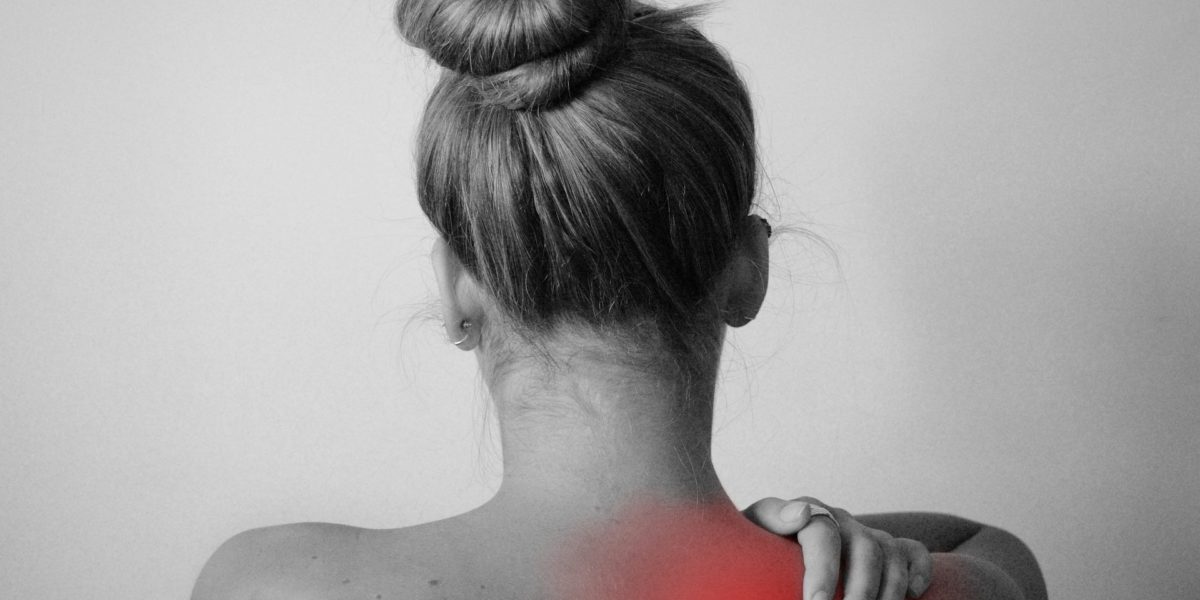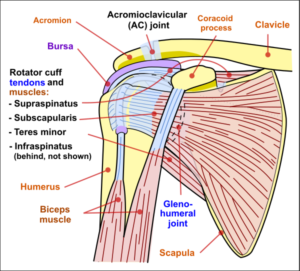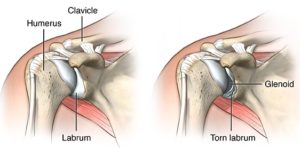The shoulder joint is one of the most incredible joints in the human body. Humans have been recorded throwing 100+ mph fastballs, pressing nearly 600lbs overhead, and performing incredible gymnastics moves. The shoulder is a ball-and-socket joint, and it is by far the most mobile joint in the human body. But this great range of motion comes at the price of being the most unstable joint in the body.
The contact between the shoulder blade and the humerus (upper arm) is analogous to the contact between a golf ball and golf tee. A golf ball is perched precariously on top of a tee, and can be removed from its resting place with very little force. Thankfully, the shoulder joint is a bit more complex than a golf tee, giving it more stability. However, it is still very weak in relation to the rest of the human body, as it is only held together by the four, small rotator cuff muscles, the glenoid labrum, the biceps tendon, and several ligaments.
One of the most common shoulder injuries is a shoulder dislocation. This injury occurs about 200,000 times per year. This injury occurs most often in men in their 20s and in men and women above age 60. The younger group sustains this injury most often from a violent incident, either from a sports injury or a motor vehicle accident. The older age group sustains this injury mostly from non-violent injuries, such as falling. This causes a tear in the labrum, resulting in future instability.
The labrum is a cartilaginous ridge around the joint that adds stability by creating a seal between the humerus and shoulder blade. Returning to the golf ball analogy, the labrum is like a rubber ring around the top of the golf tee that helps keep the ball from falling off. When this is torn, it does not often heal, as there is very little blood flow in the shoulder joint. This tear remains and makes it more likely for future dislocations to occur.
This lack of stability can be addressed both surgically and non-surgically. Non-surgically is generally the preferred, but less successful option. It involves strengthening the shoulder muscles to make up for the lost stability of the labrum. The rotator cuff muscles as well as other larger muscles are strengthened to compensate for the torn labrum. While the muscles can help immensely with reducing instability, they cannot always entirely replace the labrum. If this is the case, surgery can be done to re-attach the labrum and give the shoulder nearly all the stability that it had prior to the tear.
One example of someone who had this surgery and then returned to a near pre-injury level of function is Saints’ quarterback, Drew Brees. Brees suffered a torn labrum and had it repaired with twelve anchors. He then would return to the NFL and become one of the greatest quarterbacks of all time. He was the MVP of Super Bowl XLIV and is a twelve-time Pro-Bowler. A labral tear can be devastating, but as can be seen by Brees’ story, it can be overcome. So while the shoulder comes with its fair share of liabilities, it is still one of the most impressive joints in the body.
Sources and Further Reading:
The Story of Drew Brees and the ‘1 in 500 Injury’ That Couldn’t Stop His Historic Career
Mayo Clinic – Dislocated Shoulder
Huang Orthopaedics – Shoulder Dislocation and Instability
Teach Me Anatomy – The Shoulder Joint


